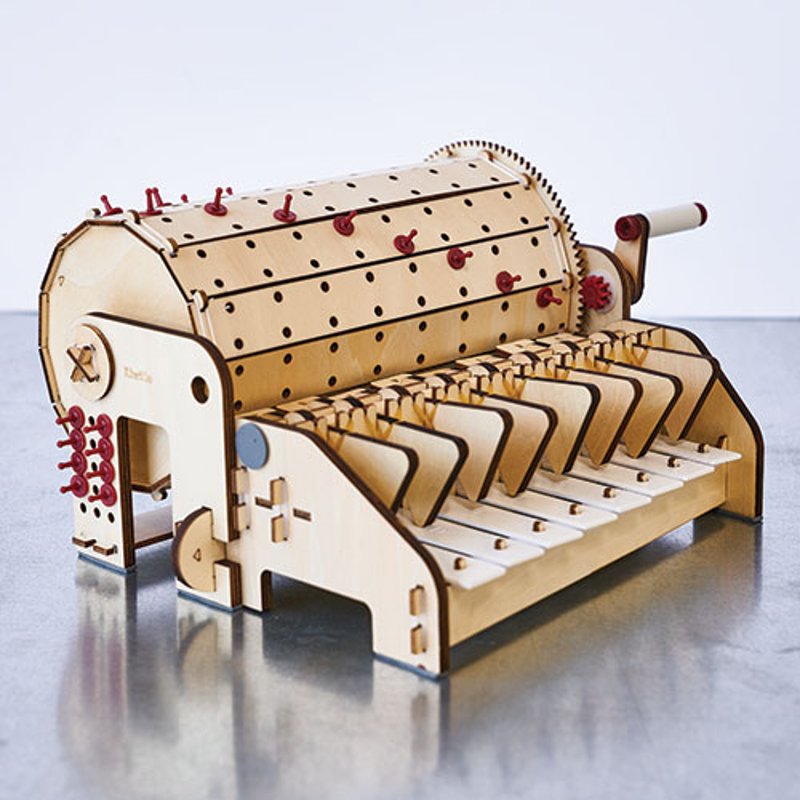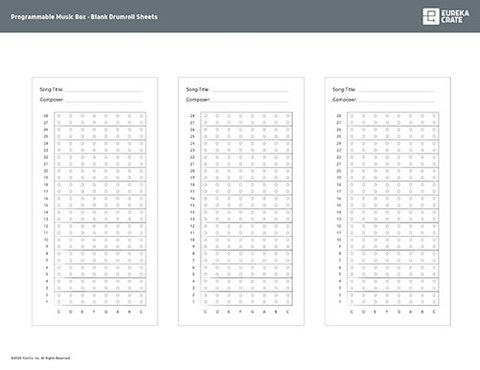Programmable Music Box
In this crate, you'll explore the science, engineering, and history behind music boxes while building one of your own!

Explore:
- History of Music Boxes
- Pitch & Frequency
- Mechanical Programming
Behind the design
Peek into the KiwiCo product design studio and the design process behind the Eureka Crate Programmable Music Box.
- Our first music box prototype was based off of a kalimba, also known as a thumb piano. The pegs plucked the musical tines instead of hitting keys, and the box could resonate to amplify the sound (like a guitar or ukulele). Unfortunately, the pegs weren’t strong enough to pluck the tines, so we had to move away from the kalimba design. But we still think it looks pretty!
Kalimba Conundrum
- As we developed the keyboard design for the music box, we came up with a bunch of ideas that needed refinement. The most striking difference between this keyboard prototype and the final design is the steel washers we used as hammers. Their thin, hard edges made strong contact with the tone bars, but the metal-on-metal collisions ended up sounding more like a spill at a hardware store than music. Switching to wood hammers helped soften the sound to make it more pleasing.
Heavy Metal Hammers
- To write the sample tunes in the instruction booklet, we started by sounding out each tune on a piano. But then, instead of working out the final note arrangements on a music box, we actually programmed them in a music software called GarageBand. The clickable notes were much faster for fine-tuning the melodies than plugging and unplugging pegs. As a final check, though, we did play the tunes on a music box to make sure they sounded good offline, too!
Computerized Compositions

